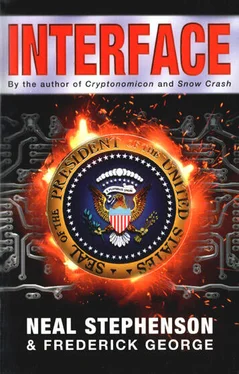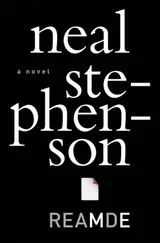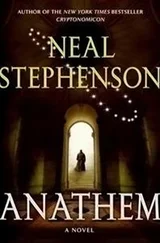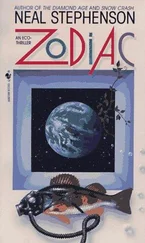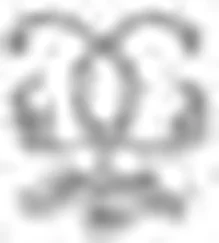Neal Stephenson - Interface
Здесь есть возможность читать онлайн «Neal Stephenson - Interface» весь текст электронной книги совершенно бесплатно (целиком полную версию без сокращений). В некоторых случаях можно слушать аудио, скачать через торрент в формате fb2 и присутствует краткое содержание. Жанр: Фантастика и фэнтези, на английском языке. Описание произведения, (предисловие) а так же отзывы посетителей доступны на портале библиотеки ЛибКат.
- Название:Interface
- Автор:
- Жанр:
- Год:неизвестен
- ISBN:нет данных
- Рейтинг книги:4 / 5. Голосов: 1
-
Избранное:Добавить в избранное
- Отзывы:
-
Ваша оценка:
- 80
- 1
- 2
- 3
- 4
- 5
Interface: краткое содержание, описание и аннотация
Предлагаем к чтению аннотацию, описание, краткое содержание или предисловие (зависит от того, что написал сам автор книги «Interface»). Если вы не нашли необходимую информацию о книге — напишите в комментариях, мы постараемся отыскать её.
Interface — читать онлайн бесплатно полную книгу (весь текст) целиком
Ниже представлен текст книги, разбитый по страницам. Система сохранения места последней прочитанной страницы, позволяет с удобством читать онлайн бесплатно книгу «Interface», без необходимости каждый раз заново искать на чём Вы остановились. Поставьте закладку, и сможете в любой момент перейти на страницу, на которой закончили чтение.
Интервал:
Закладка:
Neal Stephenson and Frederick George
Interface
To Wilbur
PART 1. The State of the Union
1
William Anthony Cozzano's office was a scandal. So it was whispered in the high councils of the Illinois Historical Society. For over a century, under dozens of governors, it had looked the same. Then Cozzano had come along and moved all the antique furniture into storage (Abraham Lincoln was the greatest man in history, Cozzano said, but his desk was a piece of junk, and Stephen Douglas's side chair was no prize either). Cozzano had dared to move electronics into the frescoed vault of the governor's office - a thirty-six-inch Trinitron with picture-in-picture so that he could watch C-SPAN and football at the same time! And his chair was no antique, but a high-tech thing with as many adjustable features as the human body had bones. He had suffered enough abuse, he claimed, in Vietnam and on the frozen turf of Soldier Field and didn't deserve to be mangled by some antique chair day in and day out, Illinois Historical Society be damned. That chair was everything Cozzano wasn't: fat with padding and glossy with petal-soft leather where Cozzano was lean and craggy and weathered, a man who had waited his whole life to look the way he did now, as if carved from a block of white oak with a few quick strokes of an adze.
Cozzano was sitting in the chair one night in January, holding a fountain pen as big as an uncooked hot dog in his left hand. Cozzano returned to his home in the small town of Tuscola every weekend to mow the lawn, rake leaves, or shovel snow, so calluses made a dry rasping sound as his writing hand slid across the paper.
The fountain pen looked expensive and had been given to him by someone terribly important a long time ago; Cozzano had forgotten whom. He late wife, Christina, used to keep track of who had given him what and send out little notes, Christmas cards, and so on, but since her death, all of these social niceties had gone straight to hell, and most people forgave him for it. Cozzano found that the pen's bulk fit his hand nicely, his fingers wrapped around the barrel without having to pinch it like a cheap ballpoint, and the ink flowed effortlessly on to the paper, nib scrawling and calluses rasping, as he signed the endless stream of bills, proclamations, resolutions, letters, and commendations that flowed across his desk like blood cells streaming in single file through the capillaries of the lung - the stately procession that sustained the life of the body politic.
His office was on the second floor of the east wing, directly above the capitol's main entrance, overlooking a broad lawn decorated with a statue of Lincoln delivering his farewell address to Springfield. The room had only two windows - tall narrow north-facing ones that were blocked even from the late afternoon sun by the north wing and the soaring capitol dome. Cozzano called it the "arctic circle" - the only part of Illinois that was in darkness for six months out of the year. This was a somewhat obscure and technical joke, especially in these days of endemic geographic ignorance, but people laughed at it anyway because he was the Governor. He kept his desk lamp going all day, but as the sky had darkened and as he worked into the night, he had not bothered to turn on the overhead fixtures, and he now sat in a pool of illumination in the middle of the dark office. Around the edges of the room, innumerable pieces of decoration reflected the light back at him.
Each governor decorated the office in his own way. Only a few things were immutable: the preposterous fresco on the ceiling, the massive doors with brass lions' heads mounted in their centers. His predecessor had gone in for a spare, classical nineteenth-century look, filling the place up with antiques that had belonged to Lincoln and Douglas. This impressed visitors and looked nice for the tour groups who came by every hour to launch flashcube barrages over the velvet rope. Cozzano had banned the tour groups, slamming the doors in their faces so that all they could see was the brass lions, and turned the office into a cluttered Cozzano family museum.
It had started on the day of his first inauguration, with a small photo of his late wife, Christina, placed on the corner of his historically inaccurate desk. Naturally, photos of his children, Mary Catherine and James, came next. But there was no point in stopping with the immediate family, and so Cozzano had brought in several boxes containing pictures of patriarchs and matriarchs going back several generations. He wanted pictures of his friends, too, and of their families, and he also needed various pieces of memorabilia, some of which were chosen for sentimental reasons, some for purely political ones. By the time Cozzano was finished decorating his office, it was almost filled with clutter, smelling salts had to be brought in for the Historical Society, and, as he sat down for the first time in his big leather chair, he could trace the entire genealogy and economic development of the Cozzano clan, and of twentieth-century Illinois, which amounted to the same thing.
There was an old aerial photograph of Tuscola as seen from its own water tower in the 1930s. It was a town of a few thousand people, about half an hour south of the academic metropolis of Champaign-Urbana and a couple of hours south of Chicago. Even in this photo it was possible to see gaudy vaults in the town cemetery, and Duesenbergs cruising the streets. Tuscola was, for a farm town, bizarrely prosperous.
In an oval frame of black walnut was a hand-tinted photograph of his great-grandfather and namesake Guillermo Cozzano who had come to Illinois from Genoa in 1897. In typically contrary Cozzano fashion he had bypassed the large Italian communities on the East Coast and found work in a coal mine about thirty miles southwest of Tuscola, where soil and coal were the same color. He and his son Guiseppe had gone into the farming business, snapping up one of the last available parcels of high-quality land. In 1912, Guiseppe and his wife had their first child, Giovanni (John) Cozzano, followed three and five years later by Thomas and Peter. All of these events were recorded in photographs, which Cozzano would be more than happy to explain to visitors if they made the mistake of expressing curiosity, even allowing their eyes to stray in that direction. Most of the photos featured buildings, babies, or weddings.
John Cozzano (photo) lost his mother to influenza at the age of six and, from that point onward, lived his life as if he had been shot from a cannon. During his high-school years in the vigorous 1920s he held down a part-time job at the local grain elevator (photo). By the time economic disaster struck in the 1930s he had worked his way up into the management of that business. With one foot in his father's farm and the other in the grain elevator, John was able to get the family through the Depression in one piece.
In 1933, John fell in love with Francesca Domenici, a young Chicago woman. As evidence of his fitness to be a husband, he decided to buy an enormous stucco Craftsman house on a tree-lined brick street on the edge of Tuscola (photo). Even by the standards of Tuscola, which had an inordinate number of large and magnificent houses, it was a beaut: three stories, six bedrooms, with a full basement and a garage the size of a barn. All of the woodwork was black walnut, thick as railroad ties. He was going to buy the place for five hundred dollars from a railway company man who had gone bankrupt. At this time, John had only three hundred dollars in the bank, and so he was forced to borrow the remaining two hundred.
This quest eventually led him to Chicago, and to the doorstep of Sam Meyer (photo), formerly Shmuel Meierowitz. Sam Meyer operated a number of coexisting businesses out of a single storefront on Maxwell Street, on Chicago's near west side (photo). One thing he did was lend money. Sam's son was named David; he was a lawyer.
Читать дальшеИнтервал:
Закладка:
Похожие книги на «Interface»
Представляем Вашему вниманию похожие книги на «Interface» списком для выбора. Мы отобрали схожую по названию и смыслу литературу в надежде предоставить читателям больше вариантов отыскать новые, интересные, ещё непрочитанные произведения.
Обсуждение, отзывы о книге «Interface» и просто собственные мнения читателей. Оставьте ваши комментарии, напишите, что Вы думаете о произведении, его смысле или главных героях. Укажите что конкретно понравилось, а что нет, и почему Вы так считаете.
